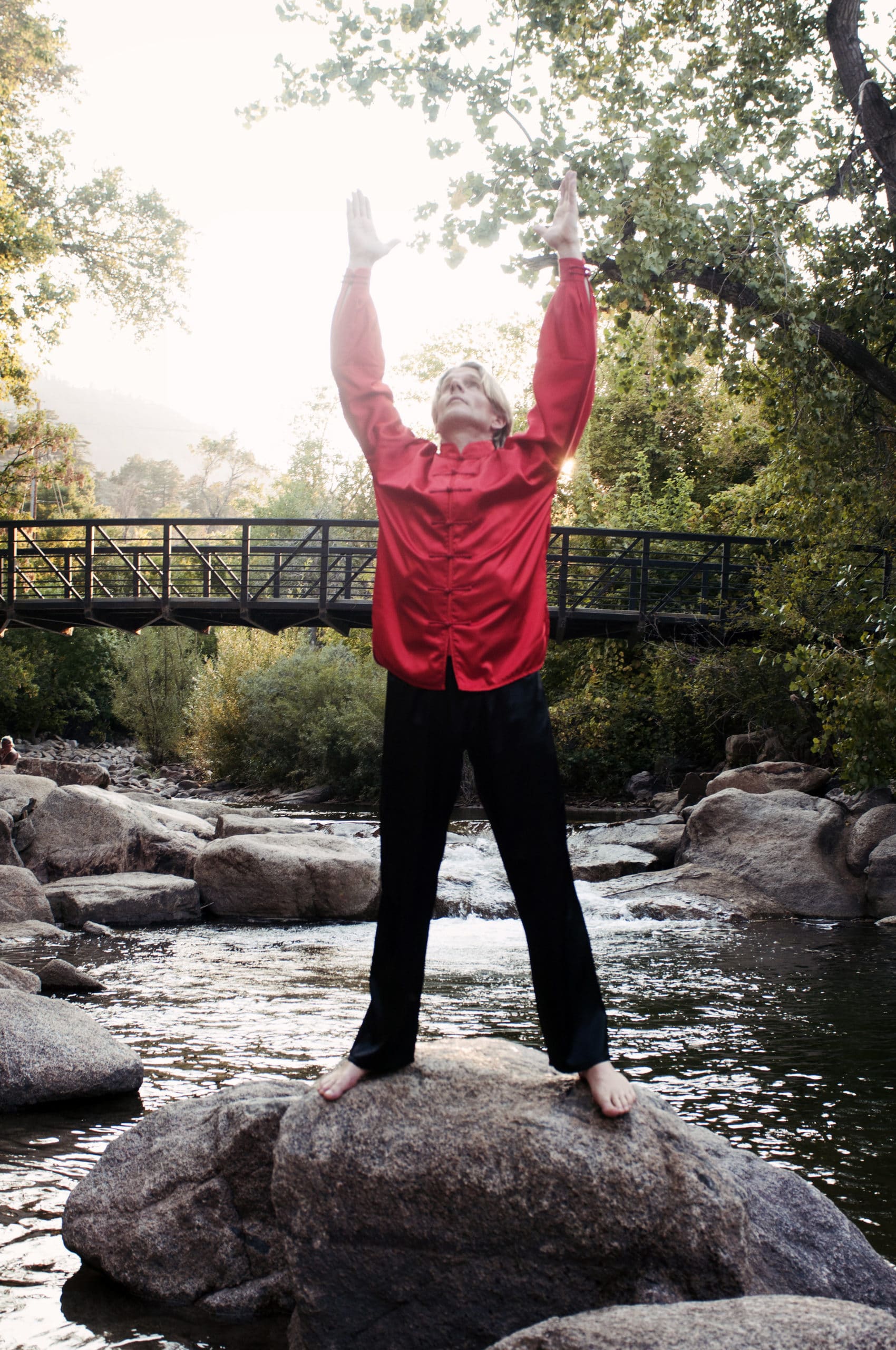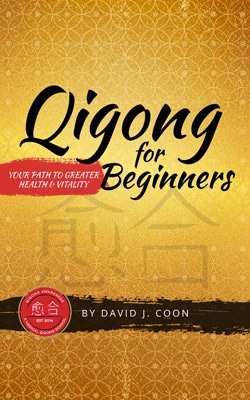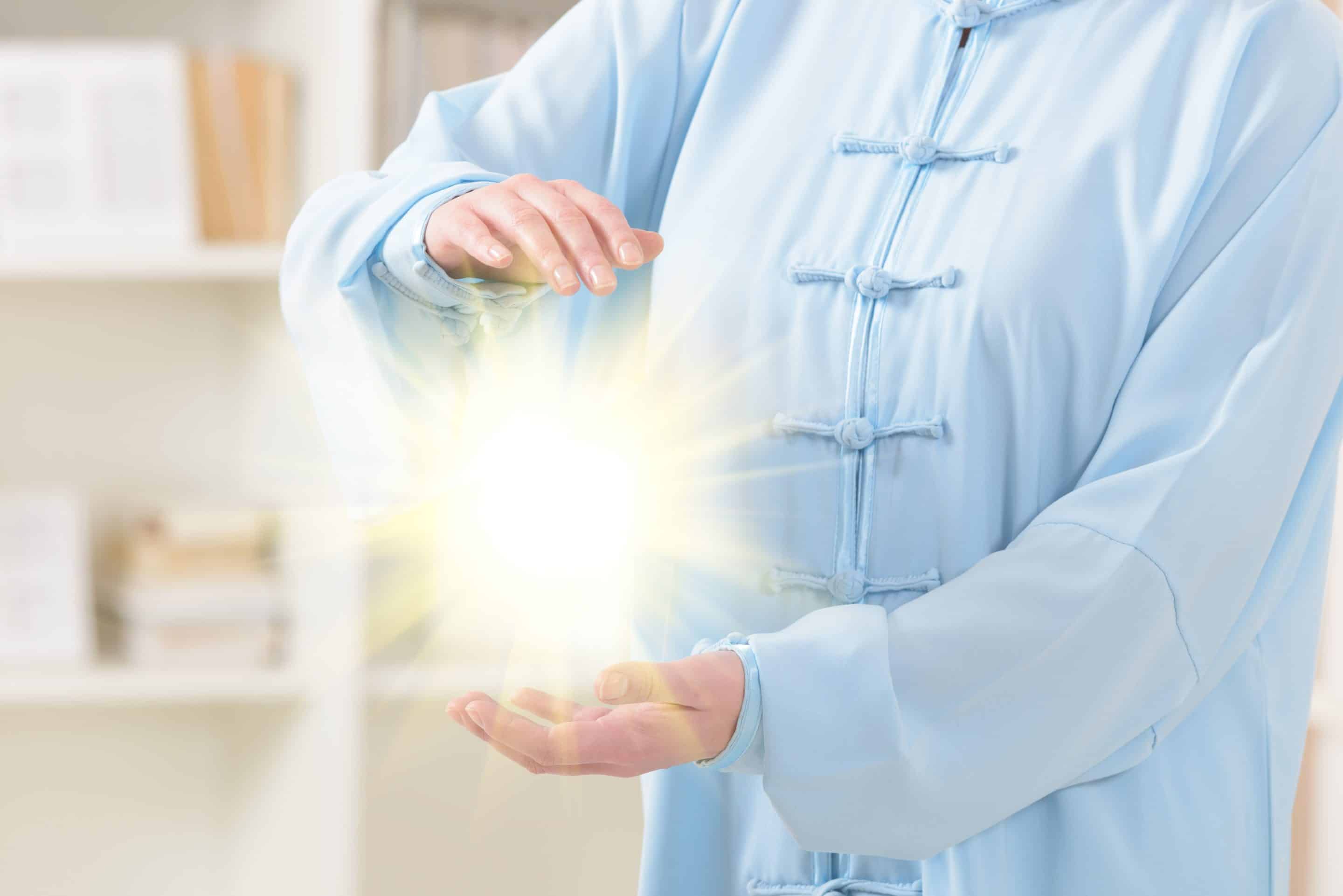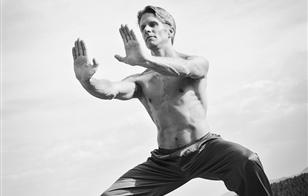A Medical Qigong Primer
Medical qigong treatment is usually offered to others for healing by skilled qigong practitioners. Although there is quite a bit of theory associated with the practice, there is also quite a lot of personal practice required by the practitioner. Theory alone is not enough; there must be practical applications of this subtle medicine.
The more versed in qi one is—in that one can sense it and feel it and understand what it is doing or not doing in the body, where it is flowing, and where it is blocked—the more helpful one can be in helping others to facilitate qi movement. Some qi healers, or energy healers in general, might say “I have moved your energy you should be feeling better soon.”
The client may or may not be aware of experiencing anything immediately, though. During 30 years of my own qigong practice and working with people’s bodies and watching their different reactions to treatment, I have noticed that there are certain bodily functions engaged with qigong practices.
As I mentioned earlier, it is said that mind is the commander of qi, qi is the commander of blood, and blood and saliva are sisters. For many years I have watched people’s throats and I have watched saliva being produced during treatments. I have also noticed that during my own qigong practice sessions.
I have practiced various forms of qigong, tai chi, and martial arts as well as different forms of meditation for many years. About 20 years ago, I learned about a simple practice anyone can do anytime from one of my master teachers—standing tree meditation (for detailed instructions, see Standing Tree Meditation later in this article).
This meditation is performed standing with feet shoulder-width apart. Knees are slightly bent and attention is placed in three places—the third eye (the area between the eyebrows), the lower dantian (lower belly), and the feet. After assuming this posture, the practice is to be still. I learned to do this practice an hour at a time. Several times, I have practiced for four hours during a session.
During standing tree meditation, I would notice the qi coming to life in my body and my blood. I would also notice that my saliva would build up at the back of my throat. I was taught to be still and to imagine that even my breath was nonexistent. While practicing for 20 minutes, for example, saliva would begin to build up and eventually I would have to swallow it. My teachers told me to simply swallow it when I needed to with as little effort and attention as possible. I noticed that with each swallow my qi was growing and changes were happening in my blood.
In looking into Daoist practices and excerpts from old texts, I came across a teaching that the swallow can feed the enhancement of the transformative qi or that it can feed the digestion. I noticed that at the beginning of these standing tree meditation practices my saliva seemed to feed my digestion.
My belly would begin to loosen up and I could feel all my organs relaxing. My stomach and my intestines would begin to unwind and my digestion seemed to relax and enter deeper phases of rest and digestion. This seemed to be my parasympathetic nervous system kicking in. I could also feel that my large intestine was elongating and relaxing. I could feel the qi building in my body and my blood and, as this continued, I could feel the qi traveling up my back into the lower back where it would tend to get stuck.
As my practice continued, the qi would rise and get stuck in the middle of my back. The qi seemed to be making its way to my kidneys. In TCM, the kidneys are said to control inhalation. As the practice continued to unfold and saliva continued to build up and be swallowed, my breathing would change. When my breathing changed, it was as if I was being breathed rather than breathing. It was an enlivening experience.
I now tell my qigong students to be still during standing tree meditation and to observe their breath. I tell them to practice patience. I then ask them why they are practicing patience. I ask them what it is they are waiting for and I tell them they are waiting for their kidneys to breathe them.
I notice when I am treating other people that most people’s saliva is initially slow to move. Although this varies depending on the condition the client is experiencing, I generally find that this is the case. Until a person’s qi begins to be built up, the saliva is nothing worth noting. When the person’s qi becomes more active, when the qi begins to build in the body, in the lower dantian, you will begin to see saliva build up and move until then the throat is dry and quiet.
In my experience, most people’s qi is blocked enough that their digestion is stagnant and they are living with varying degrees of “fight or flight” stress. This stress affects the digestion, the blood, and the saliva flow.
The lower dantian is conceptualized as a reservoir that can hold energy. It can also be depleted of energy. Ancient Daoist practitioners taught that this lower reservoir is associated with jing (essence). I sometimes call it essence qi when I am speaking generally with my students. It is the raw vital essence of life itself, and when it begins to run out, tiredness, heaviness, low energy, and health challenges ensue. It is said in Daoist practice that there must be a certain degree of jing (essence) before the energy coming into and through the body can be further refined in the middle and upper dantians. Once the qi is refined through meditative practice such as standing tree meditation, the qi moves into the solar plexus, chest, and the third eye.
Earlier I said that the qi would move up during my standing tree meditation and become lodged in my lower to middle back. This is an area sometimes called the first knot and has to do with deeply stored past energetic and subconscious information. Many people seem to experience this after practicing qigong for a while. I find that it encourages students to know that when this happens (which it usually does) they should not be discouraged and should see it as a sign they are making progress.
Once the qi begins to build in the lower dantian people tend to get hot, sometimes really hot. The qi then moves upward toward the solar plexus and not only does this influence the saliva and the breathing patterns, but it can also cause people to notice other blockages along the path. They tend to feel these blockages in their backs at the base of their shoulder blades. These are back acupuncture points in TCM and are associated with the backside of the liver and spleen. These experiences of qi rising are common during personal qigong practice of standing tree meditation and other forms of qigong practice as well as when an individual is being treated by a medical qigong practitioner.
What to Expect
Moving qi through the lower dantian can bring up unprocessed and repressed emotions. Dealing with repressed emotion energetically is an excellent way to not only heal the body but also to heal the past. The past and the pain that comes with it is stored in the lower dantian and the first knot.
Again, this information is subconscious. As we practice qigong and the energy builds up within us and within the lower dantian, some of the subconscious information will rise into our awareness. Many people get stuck trying to figure out what these emotions are all about and the process can generate fear. They become anxious about rising anxiety.
As my master teacher taught me many years ago during our extensive training sessions, “It’s just energy, it’s just stuck qi—let it rise.” What a profound teaching this is. I have spent the last 20-plus years dissolving my past emotional stress and inner conflicts using that idea and mantra and it has made such a difference in my life.
There is a saying that can be traced back to many ancient wisdom schools: “Know thyself first.” I believe that qigong teaches us to know ourselves first. The teaching doesn’t say “know thy neighbor first.” It doesn’t say “know your family first.” It says “know thyself first.”
I have heard that Lao Tzu said: “If you want to heal all of humanity you must heal all of yourself.” In healing ourselves, I believe it is necessary to bring up and alchemize our past. These ancient practices teach that we can turn heavy lead into gold. It is said in ancient Daoist practices that even saliva can become the swallowing of gold. So as old emotion rises, heats up, and subsequently dissolves, it changes not only our emotional past but our biochemistry.
While studying TCM, Daoist practices, Eastern philosophy, martial arts, and qigong, I was also studying molecular and cellular biology, as I mentioned earlier. Of all the things I learned, one in particular caught my attention—hormones!
Hormones are part of the endocrine system and they are cell-to-cell communicators; they relay messages to every cell in the body. I began to see a link between chakras, endocrine glands, the Daoist teaching of swallowing golden elixir, and hormones. Hormones are the most potent cell-to-cell communicators in the body and, unlike other cell-to-cell communicators that come and go very quickly, hormones last for days.
Hormones come in the form of life hormones and death hormones that are secreted by endocrine glands. These glands sit in the center of the dantians and the chakras. I believe they convert qi to internal chemical messengers down to cell-level DNA, and many teachers and researchers also have theories and ideas about this.
As we go through our lives, we feed our stress or we feed our healing abilities. In the midst of our unconscious everyday habits, we are generating more stress and death hormone. Through qigong practice, we are dissolving our stress and—some teachers say—we are alchemizing it. We use the heavy energy, the lead, the density of information stored about our past, and we move it up the ladder of both the dantians and the chakras and the spine toward the heart or shen. After the energy makes its way through the first knot, there comes some release, freeing up a tremendous amount of energy. Once it moves through the first knot, there is said to be a second knot in the middle dantian associated with the heart. The unraveling of this knot is the experience I believe I had that began to heal my spine.
When the energy rose further from my lower belly to the middle of my back and eventually to my upper back and chest, there came the release in the heart chakra space I spoke of earlier. In Daoist terms, the qi entered into the middle dantian and the realm of shen. I had a huge heart opening and my body was filled with joy and relief. I was also filled with compassion and the desire to help others heal even more than before. The energy that ran through my body increased and the number of people that came to me for healing also increased. From there, my energy began to rise even further into the area of the third eye and my sixth sense, psychic abilities, and intuition were greatly enhanced.
As I found out later, this is the progression Daoists and others describe when qi makes its progression upward toward wuji (infinite space) in its ever-increasing enlightenment. Energy goes from heavy to lighter and lighter and lighter. When that happens, the consciousness itself becomes lighter and lighter and lighter. Being lighter is associated with healing. When one is heavy there is heavy endarkened energy. Medical qigong practice is a mechanism for lightening this energy.
Beginning a Qigong Practice
There are many excellent qigong exercises; some are more external and some are more internal, and I believe both are necessary. The external practices not only develop internal qi but they also build the muscles, tendons, and bones. There are internal practices that can do this as well. Then there are internal practices that may not develop your musculature or increase your bone density but may produce very powerful healing agents that can’t be produced by the more external practices.
Standing tree meditation is a very internal, potent, and easily conveyed practice.
Standing Tree Meditation
- Set a timer for 5, 10, 20, or 30 minutes.
- Stand with feet shoulder-width apart.
- Close eyes or gaze.
- Place your hands at your sides.
- Be still. Find a straight and aligned posture.
- Tuck your tailbone in slightly.
- Bend your knees slightly.
- Place your hands and leave them there.
- Place your feet and leave them there.
- If your face itches, don’t scratch it.
- If your monkey mind distracts you, be still.
- Don’t worry about your mind.
- Don’t fall asleep.
- Place your attention in your third eye between your eyebrows.
- Use your attention to focus on the area just below your navel center.
- Use your attention to stay connected to your feet and the earth.
- Do not move.
- Do not readjust except ever so slightly in the beginning; after that, no movement.
- All movements will now be internal.
- Keep bringing your attention to the third eye to take your mind’s attention away from the top of your head where the monkey mind or neocortex is; bring your mind to the frontal lobe, which is a center of power.
- Every moment you are still you will begin gathering qi to yourself that was being squandered before by moving, looking, thinking, etc.
- Every minute that goes by there will be more and more qi building and then moving.
- Don’t worry if you feel nauseous; this is toxicity leaving the tissues and entering the blood and is normal. If it doesn’t pass and you need to stop, no problem. Flush it out and in a day or two try again.
- If you get dizzy, sit down and the dizziness will go away; this is also normal for many people as qi clears up different pathways, tissues, and organs.
- Many people will ask “what should I think about?”. If you find it helpful, you can remind yourself to be still. Watch your saliva, your qi flow, and your breath. Then remind yourself again to be still. Some people find this helpful, especially at the beginning.
- Be mindful. Simultaneously don’t over worry if you experience some pain and some discomfort; this is normal. The exercise is not hurting you; it is detoxifying emotional and other poisons that have become lodged in the body.
- If you have any medical conditions though be extra careful and do not push yourself.
- Some of these movements of stagnant Chi and stagnant blood may feel weird or strange at first. So do a little at a time.
- Under the density of the physical body lives an energy body and this energy body can feel weird and strange until it becomes clearer and you become used to it. It is the debris in the energy body, the past information regarding life experiences that feels weird. The energy body itself is blissful when cleansed and clear.

For live and recorded weekly Zoom Qigong and Medical Qigong Classes Click here:







